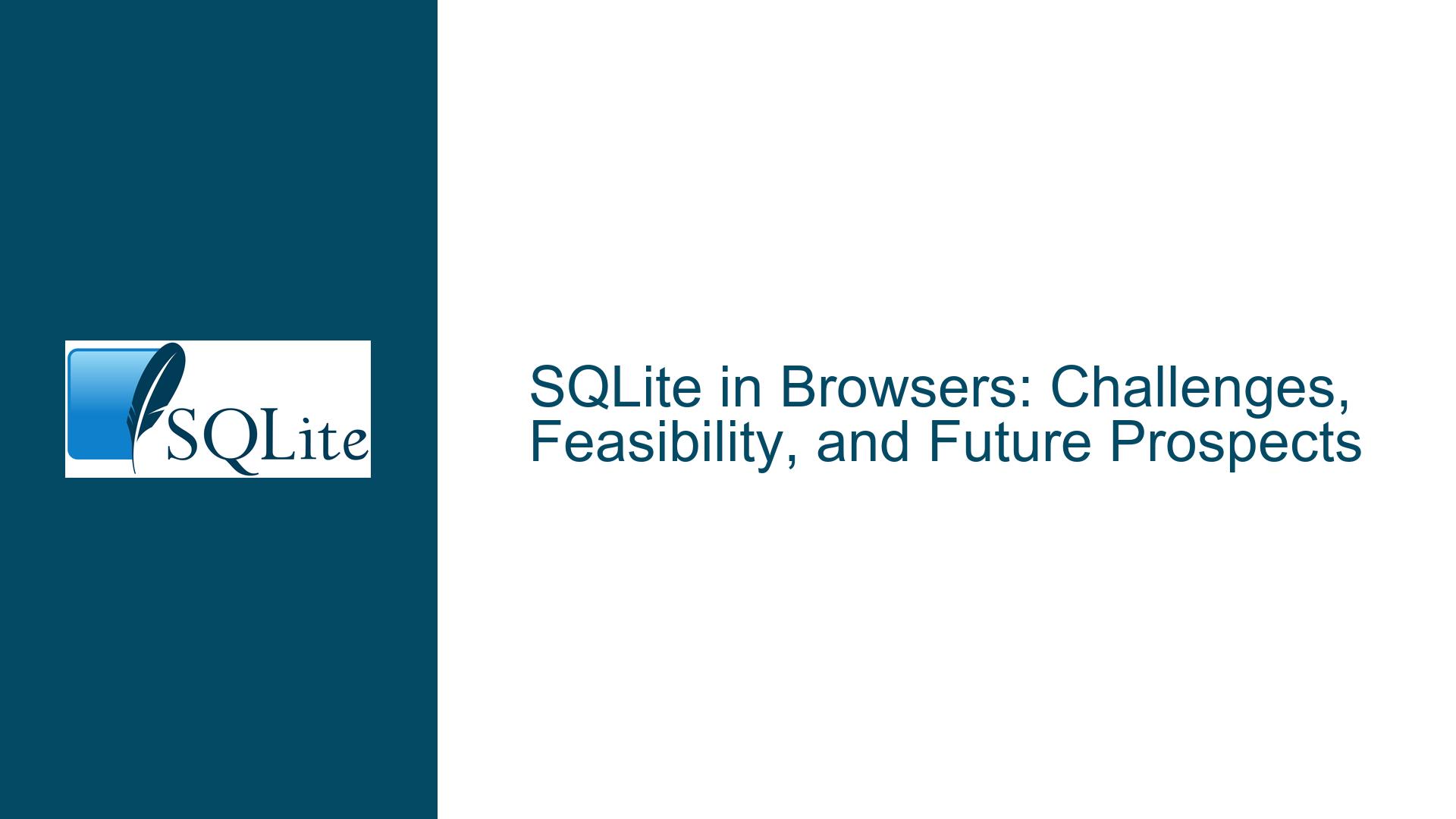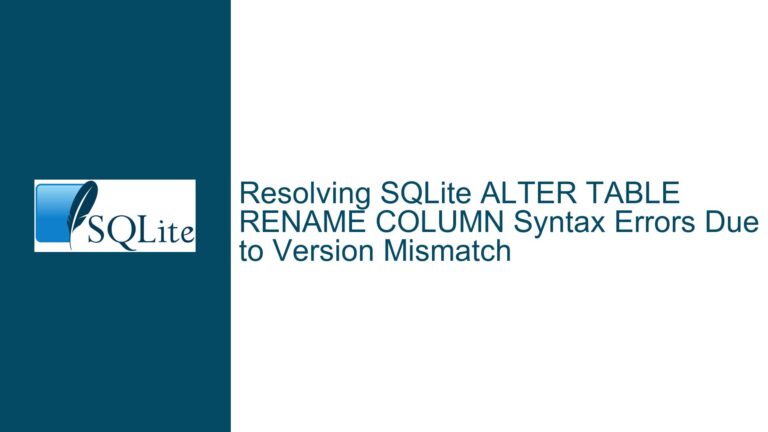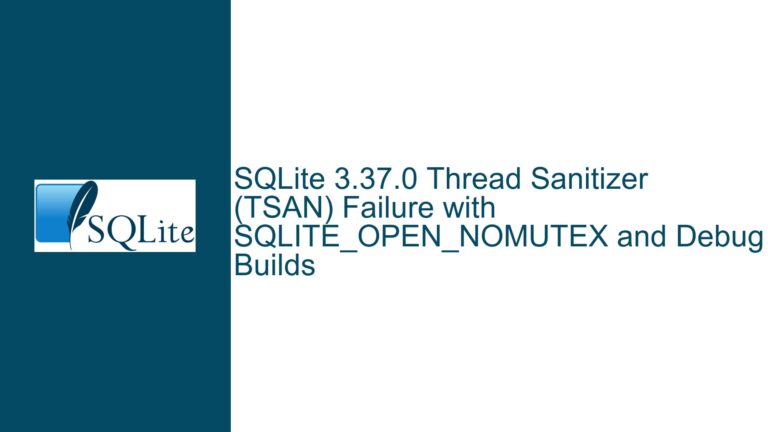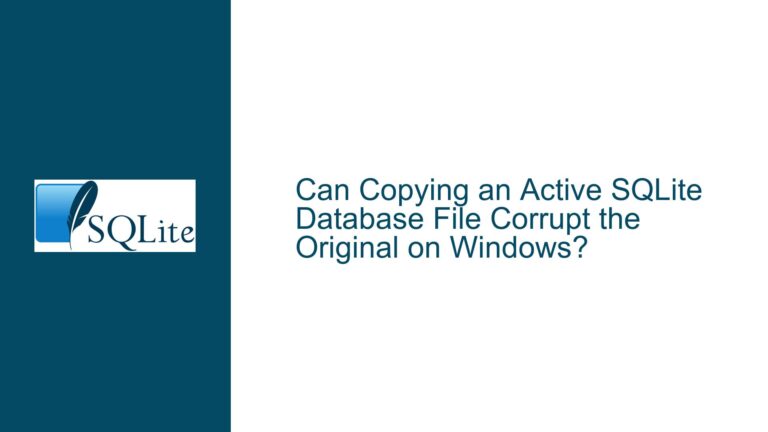SQLite in Browsers: Challenges, Feasibility, and Future Prospects
The Current State of SQLite in Web Browsers
The integration of SQLite into web browsers has been a topic of significant interest and debate among developers, particularly those who value the lightweight, serverless, and self-contained nature of SQLite for building web applications. SQLite is a widely-used embedded database engine that is renowned for its simplicity, reliability, and efficiency. However, its adoption in web browsers has been fraught with challenges, primarily due to the limitations of browser environments and the lack of official support for SQLite in this context.
At present, SQLite is not natively supported in web browsers. While there are JavaScript-based implementations like sql.js that allow developers to run SQLite in the browser, these solutions are not official and come with their own set of limitations. sql.js, for instance, is a port of SQLite to JavaScript using Emscripten, which compiles C code to WebAssembly (WASM). While sql.js provides a high-level interface for executing SQL queries, it lacks the low-level APIs that are essential for more complex applications. This limitation makes it unsuitable for scenarios that require fine-grained control over database operations or that need to handle large datasets efficiently.
Moreover, the storage models available in modern browsers, such as IndexedDB and Web Storage, are not designed to support the full range of features that SQLite offers. IndexedDB, for example, is a NoSQL database that provides key-value storage, but it lacks the relational capabilities and ACID (Atomicity, Consistency, Isolation, Durability) guarantees that are central to SQLite’s design. As a result, attempts to use IndexedDB as a backing store for SQLite have been met with challenges, particularly when it comes to maintaining data consistency across multiple browser tabs or sessions.
The lack of official support for SQLite in browsers has led to a fragmented ecosystem where developers must rely on third-party libraries and workarounds to achieve their goals. This situation is less than ideal, as it introduces additional complexity and potential points of failure into the development process. Furthermore, the absence of a standardized approach to integrating SQLite into browsers has hindered the adoption of SQLite for web-based applications, despite its many advantages.
The Technical and Standardization Hurdles
One of the primary reasons for the absence of SQLite in browsers is the technical and standardization hurdles that must be overcome. The web platform is built on a foundation of open standards, and any new feature or technology that is introduced must go through a rigorous standardization process. This process typically involves multiple independent implementations of the feature, as well as extensive testing and review by the broader web community.
In the case of SQLite, the standardization process has been complicated by the fact that SQLite is a single, self-contained database engine. While SQLite is widely used and highly regarded, the lack of alternative implementations has made it difficult to meet the requirement for multiple independent implementations that is often necessary for standardization. This issue was a key factor in the decision to abandon the WebSQL standard, which was initially proposed as a way to bring SQL databases to the web.
The WebSQL standard, which was based on SQLite, was deprecated in 2010 due to concerns about the lack of diversity in implementations. The W3C, the organization responsible for web standards, requires that any proposed standard have at least two independent implementations to ensure that the standard is not tied to a single vendor or technology. Since SQLite was the only database engine that was being used to implement WebSQL, the standard was unable to move forward.
Despite the deprecation of WebSQL, there has been continued interest in bringing SQLite to the web, and there have been several proposals to revive the effort. However, these proposals have faced similar challenges, as the underlying issues with standardization and implementation diversity have not been resolved. Additionally, the web platform has evolved significantly since the days of WebSQL, and new technologies such as WebAssembly (WASM) have emerged that could potentially enable new approaches to integrating SQLite into browsers.
Potential Solutions and Future Directions
While the challenges of integrating SQLite into browsers are significant, there are several potential solutions and future directions that could make this goal achievable. One promising approach is the use of WebAssembly (WASM) to compile SQLite into a format that can be executed in the browser. WASM is a binary instruction format that is designed to be a compilation target for high-level languages like C and C++, and it provides a way to run code in the browser at near-native speed.
By compiling SQLite to WASM, it would be possible to bring the full power of SQLite to the web without the need for a JavaScript-based intermediary like sql.js. This approach would allow developers to access the low-level APIs of SQLite, enabling more complex and performant applications. Additionally, WASM is supported by all major browsers, which would help to ensure broad compatibility and adoption.
Another potential solution is the development of new browser APIs that are specifically designed to support SQLite and other relational databases. These APIs could provide the necessary infrastructure for managing database files, handling concurrent access, and ensuring data consistency across multiple tabs or sessions. Such APIs would need to be designed in collaboration with the broader web community and would need to go through the standard standardization process to ensure that they are robust, secure, and widely adopted.
In the meantime, developers who wish to use SQLite in the browser can continue to rely on existing solutions like sql.js, while also exploring alternative approaches such as using IndexedDB as a backing store for SQLite. While these solutions are not perfect, they can provide a way to achieve some of the benefits of SQLite in a web environment. Additionally, developers can contribute to the ongoing efforts to bring SQLite to the web by participating in discussions, proposing new ideas, and contributing to open-source projects that are working on this problem.
In conclusion, while the integration of SQLite into web browsers is not yet a reality, there are several promising avenues for achieving this goal. By leveraging new technologies like WebAssembly and working towards the development of new browser APIs, it may be possible to bring the power and simplicity of SQLite to the web in a way that is both practical and standardized. Until then, developers will need to continue to rely on existing solutions and workarounds, while also keeping an eye on the evolving landscape of web technologies.






